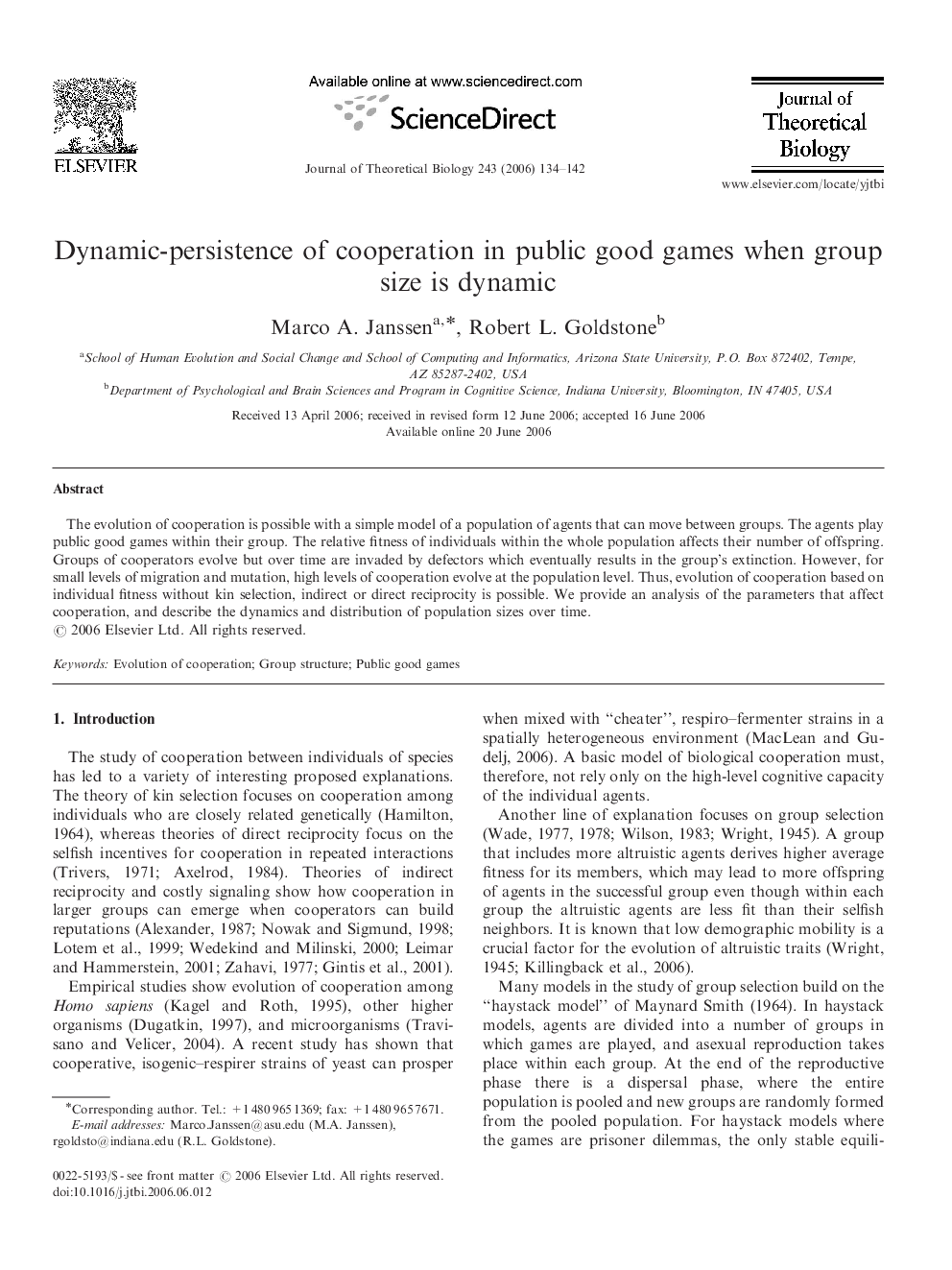| Article ID | Journal | Published Year | Pages | File Type |
|---|---|---|---|---|
| 4499361 | Journal of Theoretical Biology | 2006 | 9 Pages |
The evolution of cooperation is possible with a simple model of a population of agents that can move between groups. The agents play public good games within their group. The relative fitness of individuals within the whole population affects their number of offspring. Groups of cooperators evolve but over time are invaded by defectors which eventually results in the group's extinction. However, for small levels of migration and mutation, high levels of cooperation evolve at the population level. Thus, evolution of cooperation based on individual fitness without kin selection, indirect or direct reciprocity is possible. We provide an analysis of the parameters that affect cooperation, and describe the dynamics and distribution of population sizes over time.
